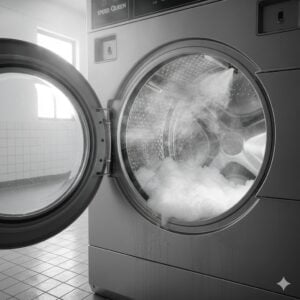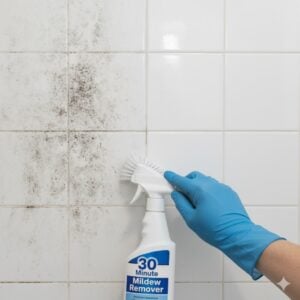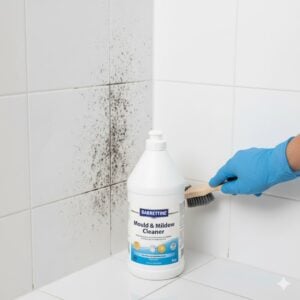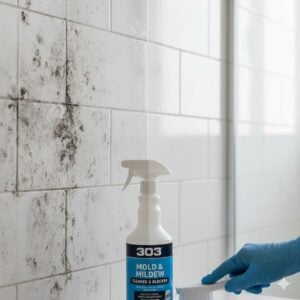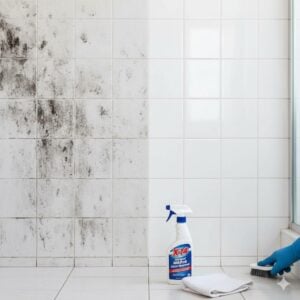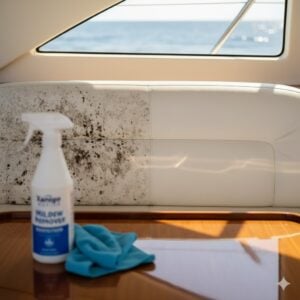Hello, dear readers! Today, we’re diving into the world of “cleaning Abu Dhabi” with a focus on making your home spotless and welcoming. Whether you’re dealing with everyday messes or stubborn stains, we’ve got you covered. Cleaning isn’t just about appearance; it’s crucial for health and comfort. In this article, we’ll share nine mind-blowing tricks to elevate your cleaning game. From tackling tough grime to maintaining a fresh ambiance, these tips will transform your living space. So, let’s get started on this journey to a cleaner, healthier home together!
Table of Contents
Toggle#1: The Power of Baking Soda and Vinegar
Baking soda and vinegar are a dynamic duo that can tackle a wide range of cleaning tasks in your Abu Dhabi home. Baking soda, a mild abrasive, can scrub away grime and stains without scratching surfaces. Vinegar, an acidic powerhouse, can dissolve mineral deposits, cut through grease, and eliminate odors. When combined, they create a fizzy reaction that helps to lift dirt and grime.
For kitchen cleaning, sprinkle baking soda on countertops, sinks, and stovetops. Then, spray with vinegar. Let it fizz and sit for a few minutes before scrubbing with a sponge or cloth. This method is excellent for removing tough stains and sanitizing surfaces. For oven cleaning, make a paste of baking soda and water, spread it on the oven’s interior, and let it sit overnight. The next day, spray vinegar over the paste and wipe away the grime with a damp cloth.
In the bathroom, baking soda and vinegar can clean tiles, grout, and fixtures. To clean grout, make a paste with baking soda and water, apply it to the grout lines, and spray with vinegar. Scrub with a brush after the fizzing stops, then rinse with water. For showerheads, fill a plastic bag with vinegar, submerge the showerhead, and secure the bag with a rubber band. Leave it overnight, then remove the bag and run the shower to rinse away mineral deposits.
For laundry, adding a cup of vinegar to the rinse cycle can soften clothes, reduce static, and eliminate odors. Baking soda can be added to the wash cycle to boost detergent performance and remove stains.
This powerful combination of baking soda and vinegar is a versatile, natural, and cost-effective solution for keeping your home sparkling clean.
#2: Steam Cleaning for Deep Sanitation
Steam cleaning is an effective method for achieving deep sanitation in your home. Using high-temperature steam, this technique can clean and disinfect surfaces without the need for harsh chemicals. Steam cleaners work by heating water to produce steam, which is then applied to surfaces through a nozzle or attachment, breaking down dirt, grime, and bacteria.
In the kitchen, steam cleaning can be used on countertops, stovetops, and sinks. The high temperature of the steam helps to dissolve grease and food residues, making it easy to wipe away. For stubborn spots, such as baked-on food in the oven or microwave, use a steam cleaner with a brush attachment to scrub away the debris. Steam cleaning is also excellent for sanitizing cutting boards and removing odors from kitchen surfaces.
In the bathroom, steam cleaning can tackle tiles, grout, and fixtures. The steam penetrates the porous surfaces of grout lines, killing mold and mildew and lifting stains. To clean grout, direct the steam along the lines, and follow up with a scrub brush if necessary. Steam can also effectively clean shower doors, mirrors, and even toilets, ensuring all bacteria and germs are eliminated.
For floors, steam cleaning is a great option, especially for tile, laminate, and sealed hardwood floors. The steam not only cleans but also dries quickly, preventing water damage. Use the appropriate attachment for your floor type and move the steam cleaner slowly to allow the steam to penetrate and lift dirt.
Upholstery and carpets can benefit from steam cleaning as well. The steam penetrates fabric fibers, removing dirt, allergens, and odors. Use a specialized upholstery attachment and test a small area first to ensure the fabric can withstand the heat.
By incorporating steam cleaning into your routine, you can achieve a deep, chemical-free clean that enhances the overall hygiene of your home.
#3: Essential Oils for a Fresh Scent
Essential oils are not only great for aromatherapy but also serve as powerful allies in your cleaning arsenal, providing a fresh scent and additional cleaning power. Incorporating essential oils into your cleaning routine can make your home smell delightful and create a more pleasant cleaning experience.
For general cleaning, create a homemade all-purpose cleaner by combining water, white vinegar, and a few drops of essential oils like lemon, tea tree, or lavender in a spray bottle. Lemon oil has natural antibacterial properties and leaves a refreshing citrus scent. Tea tree oil is known for its antimicrobial and antifungal properties, making it ideal for disinfecting surfaces. Lavender oil not only smells wonderful but also has antiseptic properties that help in killing germs.
In the kitchen, essential oils can be used to freshen up the air and clean surfaces. Add a few drops of lemon or orange oil to your dishwashing liquid to boost grease-cutting power and leave your dishes smelling great. To deodorize and sanitize your garbage disposal, pour a mixture of baking soda and vinegar down the drain, followed by a few drops of peppermint or eucalyptus oil.
For bathroom cleaning, mix water, baking soda, and tea tree oil to create a paste that effectively cleans and disinfects sinks, tubs, and toilets. Spray a solution of water, vinegar, and lavender oil on shower curtains and tiles to prevent mold and mildew while leaving a soothing scent.
To freshen up your living spaces, add a few drops of your favorite essential oil to a cotton ball and place it in a vacuum cleaner bag or dust cup. This will release a pleasant aroma as you clean. You can also make a room spray by combining water and essential oils in a spray bottle to mist your home and create a welcoming atmosphere.
Using essential oils in your cleaning routine not only enhances the cleanliness of your home but also promotes a calming and refreshing environment.
#4: Decluttering for a Cleaner Space
Decluttering is a vital first step in any effective cleaning routine. A cluttered space not only looks untidy but also makes cleaning more challenging. By removing unnecessary items and organizing your belongings, you create a more manageable and visually appealing environment.
Start by tackling one room at a time to avoid feeling overwhelmed. Begin with visible surfaces like countertops, tables, and floors. Remove any items that do not belong or that you no longer need. Consider adopting the “one in, one out” rule, where you only introduce a new item after getting rid of an old one. This helps prevent the accumulation of unnecessary belongings.
Create designated spaces for frequently used items. Use storage bins, baskets, and drawer organizers to keep everything in its place. Labeling containers can also help maintain order and make it easier to find things quickly. For instance, in the kitchen, group similar items together, such as baking supplies, snacks, and utensils, and store them in labeled containers or drawers.
Closets and wardrobes can become clutter magnets. Sort through your clothing and accessories, and decide what to keep, donate, or discard. A good rule of thumb is to let go of anything you haven’t worn in the past year. Use hanging organizers, shelf dividers, and storage boxes to maximize space and keep items neatly arranged.
For living areas, ensure that items like books, magazines, and electronics have designated spots. Use shelves, cabinets, and media centers to keep everything organized and off the floor. Regularly go through these areas to discard outdated or unnecessary items.
In the bathroom, use caddies, baskets, and shelves to store toiletries, towels, and cleaning supplies. Regularly check for expired products and dispose of them. Keeping counters clear and only displaying daily essentials can make cleaning surfaces much easier.
By decluttering, you not only create a more organized and efficient space but also make the cleaning process quicker and more effective. This leads to a cleaner, more comfortable living environment.
#5: Microfiber Cloths for Dusting
Microfiber cloths have become a staple in effective cleaning routines, especially for dusting. These cloths are made of tiny synthetic fibers that are incredibly efficient at trapping dust, dirt, and even bacteria. Their unique structure allows them to clean surfaces more effectively than traditional dusters or cotton cloths, making them a must-have for any home.
One of the main advantages of microfiber cloths is their ability to pick up and hold onto dust without scattering it into the air. This is particularly beneficial for people with allergies or respiratory issues, as it reduces the amount of airborne dust. Simply wipe surfaces with a dry microfiber cloth to capture dust and dirt. For areas with more grime, lightly dampen the cloth with water to enhance its cleaning power.
Microfiber cloths are versatile and can be used on a variety of surfaces, including wood, glass, metal, and plastic. In the living room, use them to dust furniture, electronics, and décor items. They are gentle enough to use on delicate surfaces like TV screens and computer monitors without leaving scratches or streaks.
In the kitchen, microfiber cloths are excellent for wiping down countertops, appliances, and cabinets. They can efficiently remove grease and food particles, making kitchen cleaning easier. Use a damp microfiber cloth to wipe down stainless steel appliances for a streak-free shine.
For bathroom cleaning, microfiber cloths work wonders on mirrors, faucets, and tiles. Their absorbent nature allows them to dry surfaces quickly, preventing water spots and streaks. Use a dry microfiber cloth to buff and polish fixtures for a sparkling finish.
To maintain the effectiveness of microfiber cloths, it’s important to clean them properly. After each use, rinse the cloth in warm water to remove debris. For a deeper clean, machine wash them with mild detergent, but avoid using fabric softeners or bleach, as these can damage the fibers. Air-dry or tumble-dry on a low heat setting to preserve their quality.
By incorporating microfiber cloths into your cleaning routine, you can achieve a thorough, efficient, and eco-friendly clean for your home. Their ability to trap dust and dirt makes them indispensable for maintaining a dust-free and healthy living environment.
#6: Cleaning Grout with Homemade Paste
Grout lines can easily become dirty and discolored, making your tiles look grimy and neglected. A simple and effective way to clean grout is by using a homemade paste made from common household ingredients. This method is not only cost-effective but also avoids the use of harsh chemicals, making it safe for you and your family.
To create the grout cleaning paste, mix baking soda and water in a small bowl until it forms a thick, spreadable consistency. The abrasive nature of baking soda helps to scrub away the dirt and grime embedded in the grout lines. For extra cleaning power, you can add a few drops of dish soap to the mixture.
Apply the paste generously to the grout lines using an old toothbrush or a grout brush. Make sure the paste covers all the discolored areas. Let the paste sit on the grout for about 10-15 minutes. This allows the baking soda to penetrate and loosen the dirt.
Next, spray the grout lines with white vinegar. The vinegar will react with the baking soda, creating a fizzy, bubbling action that helps lift away the grime. Use the toothbrush to scrub the grout, working in small sections. The combination of baking soda and vinegar is effective in breaking down stubborn stains and disinfecting the area.
After scrubbing, wipe away the paste and grime with a damp cloth. Rinse the area thoroughly with water to remove any residue. For tough stains, you may need to repeat the process or let the paste sit for a longer period.
For ongoing maintenance, consider sealing your grout lines once they are clean. A grout sealer helps to protect the grout from future stains and makes cleaning easier. Reapply the sealer every six months to keep your grout looking fresh.
Using this homemade paste method, you can restore the appearance of your grout lines and keep your tiled surfaces looking pristine and well-maintained. This simple yet effective trick ensures your floors and walls remain clean and attractive.
#7: Using Lemon for Stain Removal
Lemon is a natural cleaning agent that can effectively tackle a variety of stains around your home. Its acidity helps to break down stains and its natural bleaching properties make it an excellent choice for brightening surfaces. Here are some practical ways to use lemon for stain removal.
For kitchen cleaning, lemon is fantastic for cutting through grease and grime. To clean cutting boards, sprinkle coarse salt over the surface, then scrub with half a lemon. The salt acts as an abrasive, while the lemon juice disinfects and deodorizes. Rinse with warm water and dry thoroughly. This method also works well for wooden utensils and butcher blocks.
To remove stains from countertops, particularly those made of laminate or tiles, apply lemon juice directly to the stained area. Let it sit for a few minutes to break down the stain, then scrub with a sponge or cloth. Rinse with water to remove any residue. For tougher stains, create a paste with lemon juice and baking soda, apply it to the stain, and let it sit before scrubbing.
In the bathroom, lemon can be used to remove hard water stains and soap scum from faucets and glass shower doors. Cut a lemon in half and rub it directly onto the stained areas. The citric acid helps dissolve the mineral deposits and soap scum, leaving the surface clean and shiny. Rinse with water and dry with a microfiber cloth to prevent water spots.
Lemon is also effective for laundry stain removal. To treat stains on white fabrics, apply lemon juice directly to the stain, then sprinkle with baking soda. Gently rub the fabric together to work the mixture into the fibers, then let it sit for about 30 minutes. Wash the garment as usual. For tougher stains, soak the fabric in a mixture of lemon juice and water before washing.
Lemon can even help with tarnished metals. To clean brass or copper, create a paste with lemon juice and salt. Apply the paste to the metal surface and scrub gently with a soft cloth. Rinse with warm water and dry thoroughly to prevent tarnish from reappearing.
By incorporating lemon into your cleaning routine, you can effectively tackle a variety of stains and enjoy the fresh, natural scent it leaves behind. This simple, eco-friendly trick helps maintain a clean and bright home.
#8: The Magic of Hydrogen Peroxide
Hydrogen peroxide is a versatile and powerful cleaning agent that can tackle a wide range of cleaning tasks around your home. Its antimicrobial properties make it effective in killing bacteria, viruses, and fungi, making it an excellent choice for sanitizing surfaces and eliminating tough stains.
In the kitchen, hydrogen peroxide can be used to clean and disinfect cutting boards, countertops, and appliances. To clean a cutting board, spray hydrogen peroxide directly onto the surface, let it sit for a few minutes, then scrub with a brush and rinse thoroughly. This helps to eliminate bacteria and remove any lingering odors. For countertops, mix equal parts hydrogen peroxide and water in a spray bottle and use it to disinfect surfaces after preparing food.
For bathroom cleaning, hydrogen peroxide is particularly effective at tackling mold and mildew. To clean grout, spray hydrogen peroxide onto the grout lines and let it sit for about 10 minutes. Scrub the grout with a brush to remove the mold and rinse with water. For shower curtains, spray hydrogen peroxide onto any moldy areas and let it sit before wiping clean. This method helps to kill mold spores and prevent regrowth.
Hydrogen peroxide is also great for laundry. To remove tough stains, apply hydrogen peroxide directly to the stain and let it sit for a few minutes before washing. It works well on blood stains, wine stains, and other organic stains. For whitening and brightening clothes, add a cup of hydrogen peroxide to the washing machine during the wash cycle. This helps to keep whites bright and remove any dinginess.
In addition to these uses, hydrogen peroxide can also be used to clean and disinfect small household items. For example, soak toothbrushes, hairbrushes, and nail clippers in a mixture of hydrogen peroxide and water to sanitize them. This helps to kill any bacteria and keep these items hygienic.
Using hydrogen peroxide in your cleaning routine is a simple and effective way to maintain a clean and sanitary home. Its versatility and powerful cleaning properties make it an indispensable tool for tackling a variety of cleaning tasks.
#9: Regular Maintenance to Keep Cleanliness
Regular maintenance is key to keeping your home consistently clean and preventing dirt and clutter from building up. Establishing a routine can make cleaning less overwhelming and more manageable, ensuring your living space remains inviting and sanitary.
Create a daily cleaning schedule to tackle small tasks that make a big difference. Start by making your bed every morning. This simple act instantly makes your bedroom look neater. Wipe down kitchen counters and dining tables after each meal to prevent crumbs and spills from becoming sticky messes. In the bathroom, a quick wipe of the sink and mirror each day helps maintain a fresh appearance.
Weekly cleaning routines should focus on more thorough tasks. Vacuum or sweep high-traffic areas, such as living rooms and entryways, to keep dust and dirt at bay. Mop hard floors to remove grime and maintain their shine. Dust surfaces, including shelves, furniture, and electronics, to prevent the buildup of allergens. Clean bathrooms more comprehensively, including scrubbing toilets, showers, and bathtubs.
Monthly maintenance involves deep cleaning tasks that require more time and effort. Rotate and flip mattresses to ensure even wear and prolong their lifespan. Clean windows inside and out to let in more natural light and improve the view. Wash or vacuum curtains, blinds, and upholstery to remove accumulated dust and allergens. Clean kitchen appliances, including the oven, refrigerator, and microwave, to ensure they function efficiently and remain hygienic.
Seasonal maintenance helps tackle tasks that are often overlooked but essential for long-term cleanliness. Declutter closets and storage areas, donating or discarding items you no longer need. Deep clean carpets and rugs to remove embedded dirt and refresh fibers. Inspect and clean gutters to prevent water damage and ensure proper drainage. Check and replace air filters in HVAC systems to maintain air quality and system efficiency.
By adhering to a regular maintenance schedule, you can prevent dirt and clutter from accumulating, making your home easier to clean and more pleasant to live in. This proactive approach ensures that cleaning tasks are spread out and manageable, keeping your living space consistently tidy and hygienic.
Why Bio On is Your Go-To Cleaning Abu Dhabi
Bio On is the ultimate solution for maintaining a pristine home in Abu Dhabi. With expertise in mold remediation, death cleanup, fire damage cleanup, odor removal, deep cleaning, and hoarding cleaning, Bio On ensures a comprehensive approach to cleanliness. The team’s professional and thorough services guarantee the highest standards of hygiene, making every corner of your home spotless and safe. Utilizing advanced techniques and eco-friendly products, Bio On tackles even the toughest cleaning challenges efficiently. For tailored cleaning solutions and 24/7 support, click the free consultation button on the right bottom corner and let Bio On handle your cleaning needs with precision and care.
Conclusion
Implementing these nine cleaning tricks can significantly improve the cleanliness and hygiene of your home. From using natural ingredients like baking soda, vinegar, and lemon, to incorporating steam cleaning and microfiber cloths, these methods are effective and easy to apply. Regular maintenance ensures that your home remains consistently clean and inviting. For specialized cleaning needs and expert assistance, Bio On offers professional services tailored to your requirements. Contact the Bio On team through the WhatsApp button for a free consultation and discover how these solutions can transform your living space.








